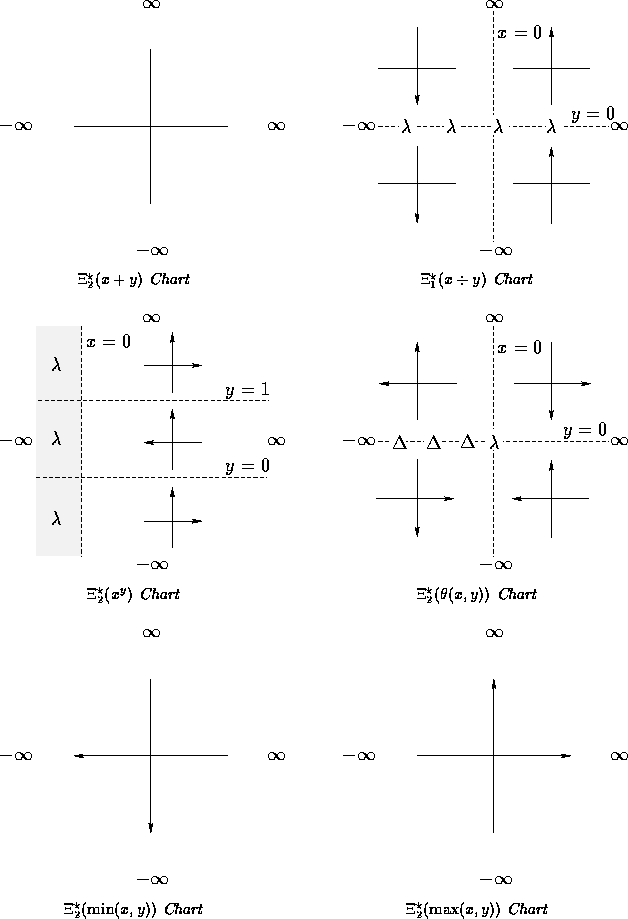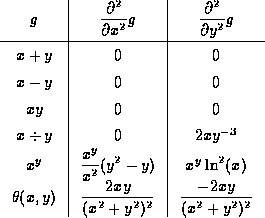




Next: 3.3.24 Examples with Binary Functions
Up: 3.3 Linear Interval Arithmetic
Previous: 3.3.22 Binary Functions: Two-Step Method
As was previously done,  charts are
used to graphically display the preferred sectioning
of a function into concave pieces.
Charts for some common binary functions follow.
charts are
used to graphically display the preferred sectioning
of a function into concave pieces.
Charts for some common binary functions follow.
The  and
and
 charts are both
identical to the
charts are both
identical to the  chart.
The two-step method may handle charts which do not
contain regions denoting that
chart.
The two-step method may handle charts which do not
contain regions denoting that  or
or  .
The given charts reveal that all of the listed
binary operators may be handled directly with the two-step
method, with the exception of
.
The given charts reveal that all of the listed
binary operators may be handled directly with the two-step
method, with the exception of  .
Since
minimization and maximization may be handled, proceeding as follows:
The above is only a formal justification of
the obvious method,
Addition, subtraction, and multiplication are particularly
straightforward since each is a bilinear function. The
bilinear bound is simply the function itself.
.
Since
minimization and maximization may be handled, proceeding as follows:
The above is only a formal justification of
the obvious method,
Addition, subtraction, and multiplication are particularly
straightforward since each is a bilinear function. The
bilinear bound is simply the function itself.
Since
the relationship,
between  and
and  ,
used to aid the determination
of
,
used to aid the determination
of  , for unary g,
may be used
to aid the determination of
, for unary g,
may be used
to aid the determination of  , for binary g.
The partial derivatives for some common binary functions follow.
, for binary g.
The partial derivatives for some common binary functions follow.





Next: 3.3.24 Examples with Binary Functions
Up: 3.3 Linear Interval Arithmetic
Previous: 3.3.22 Binary Functions: Two-Step Method
![]() charts are
used to graphically display the preferred sectioning
of a function into concave pieces.
Charts for some common binary functions follow.
charts are
used to graphically display the preferred sectioning
of a function into concave pieces.
Charts for some common binary functions follow.

![]()
![]()
![]()
![]()
